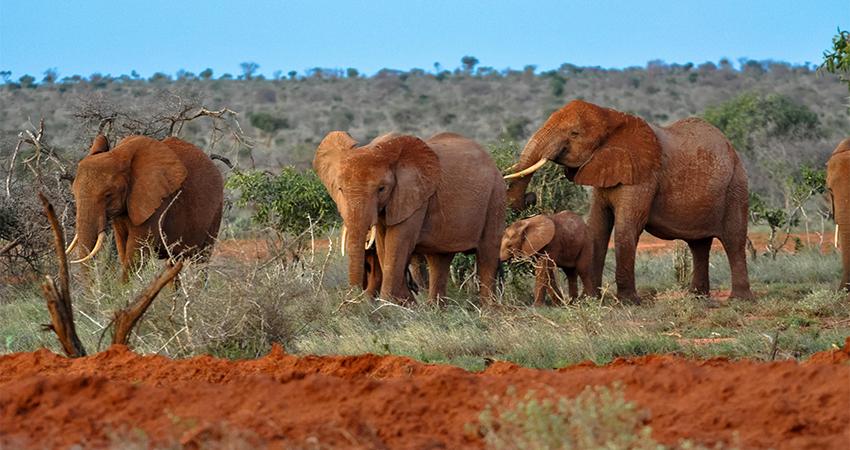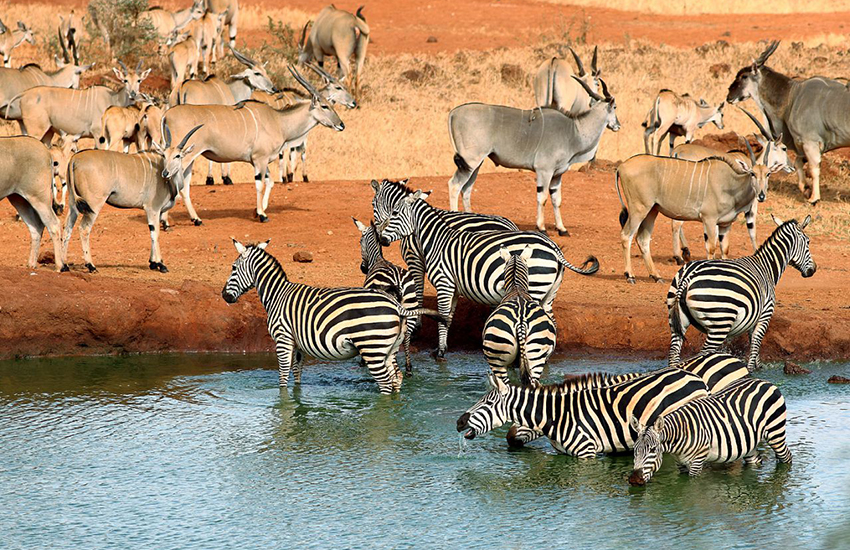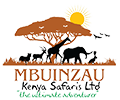A Guide To Tsavo East National Park Kenya
Tsavo East National Park is one of the oldest and largest African safari parks in Kenya. It was established in 1948 and covers 11,747 km², although not all of the park is open to the public.
Some areas are designated as “remote animal wilderness” for the Kenyan animals, but there is still a massive area for visitors to tour around and enjoy viewing the Kenyan wildlife. Key attractions include the Galana River and the Yatta plateau, as well as several pools and dams used as watering holes by both birds and animals.
Tsavo East, the larger of the two, lies to the east of the Nairobi – Mombasa road, equidistant between Nairobi and Mombasa, and offers a vast and untapped arena of arid bush which is washed by the azure and emerald meanderings of the Galana River, guarded by the limitless lava reaches of the Yatta Plateau and patrolled by some of the largest elephant herds in Kenya.

Facts About Tsavo East National Park Kenya
Altitude: 150-1,200 metres above sea level
Location: Southeast Kenya, inland from the coast.
Climate: The Kenya safari travel climate is warm and dry, temperatures ranging from 20-40 degrees C, rainfall from 200mm-700mm per annum (the ‘long rains’ falling between March and May and the ‘short rains’ between October and December).
Vegetation: One of the globe’s last biodiversity strong holds, this Kenyan safari park features bushy grasslands, open plains, semi-arid acacia scrub and woodlands.
Mammals: Kenya wildlife safari sightings include lion, leopard, elephant, black rhino, hippo, giraffe, lesser kudu, oryx, Cape buffalo, zebra, yellow baboon, waterbuck, gemsbok, Coke’s hartebeest, gerenuk, and gazelle.
Birds: The prolific bird life features 500 recorded species.
Tsavo East history and overview
Tsavo East National Park is 333km south-east of Nairobi, and 173km north-west of Mombasa. Its relative closeness to the beaches and tourist attractions around Malindi and Mombasa make it an ideal one-day wildlife safari destination for those who do not want to stay overnight.
Tsavo East National Park is a natural area of flat, dry plains, with thorny bushes and swampy marshland near the river. It is teeming with diverse Kenyan animals including large families of giraffes, gazelles, hartebeests and zebras, as well as the “Big Five” must-see animals – buffalo, African elephants, lions, rhinos and leopards.
Although it is a popular African safari wildlife park, it is very rare to see other traffic except under certain circumstances when viewing the wildlife. The guides communicate with each other by radio if they find something unusual, such as a pride of lions, and there may be a sudden convergence of vehicles to the site, but they soon disperse again. The best time to view the wildlife is early or late in the day, as the animals tend to sleep in the hot midday sun.
The park is open from 6.30am to 6.30pm daily, and the wardens at the gate give visitors a few sensible rules: do not get out of your vehicle, except at designated spots; do not harass the animals in any way; keep to the tracks; no off-road driving; and remember that the animals always have the right of way.
Suitable dress for a day’s wildlife safari to Tsavo East National Park should include loose, cotton clothing and a sunhat. Binoculars, cameras and sunglasses are essential. It is also a good idea to carry a bottle of water, frozen overnight, for you to sip during the day. As it melts, it makes a delicious drink to help you avoid dehydration in the heat. Don’t forget to enjoy the sights in real-life, not just through the lens of your camera or video recorder!
There are rest areas with restrooms and water fountains. The safari viewing lodges also provide excellent buffet lunches while you enjoy watching the animals through the huge panoramic windows. There is also a camouflaged hideout where you can view the African elephants at the watering hole.
Climate and weather in Tsavo East Safari park
The long rainy season in Kenya lasts from March to May and the rainfall is heavy, making this a bad time for wildlife safaris. The short rainy season lasts from October to December, but the weather during this period is still good enough to go on safari – just expect some afternoon showers. The humidity is high from December through April.
How to get to Tsavo East National park
By Air: Chartered light aircrafts may land at any of the six airstrips in the south part of the park, or any of the 13 airstrips in the north.
By Railway: The Nairobi-Mombasa railway runs right through the Tsavo East National Park.

What to see and do at Tsavo East National Park
These are the most common Kenyan animals you may see during your visit to Tsavo East National Park: Cape buffalo, cheetahs, duikers, African elephants, gazelles, gerenuks, giraffes, hares, hartebeests, hyenas, impalas, leopards, lions, mongoose, black faced vervet monkeys, Sykes’s monkeys, crested porcupines, giant rats, black rhinoceros, squirrels, warthogs, waterbucks, and zebras.
Lugard’s Falls is a series of rapids on the Galana River where crocodiles love to bathe.
Yatta Plateau is the world’s longest lava flow at 290km long.
Mudanda Rock is a 1.6km outcrop of rock, with a dam at its base. This is a popular drinking place for animals.
Aruba Dam also attracts animals and birds looking for a place to drink.
Walking safaris are offered by several guides along the Galana River.
Ngulia Rhino Sanctuary is saving the black rhino from extinction due to hunting by poachers.
Bird watching is best between October and January, with many migratory birds including: African skimmers, red and yellow bishops, goshawks, buffalo weavers and palm nut vultures, to name but a few. Over 500 bird species have been recorded in the park, including ostriches, kestrels, buzzards, starlings, weaverbirds, kingfishers, hornbills, secretary birds and herons.




